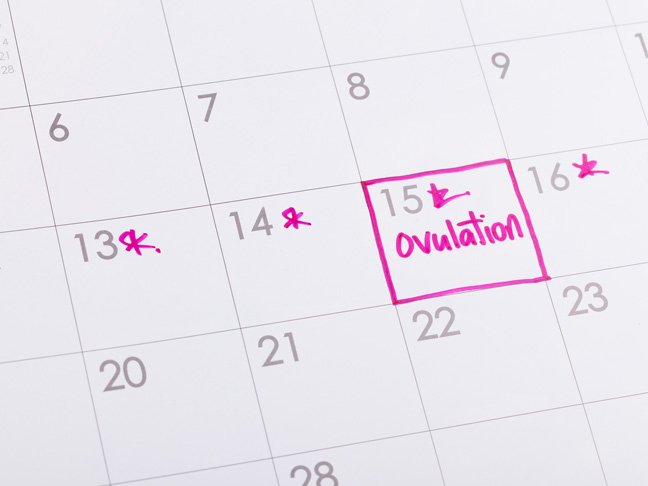When do you ovulate? If you have a fairly regular menstrual cycle, it’s pretty easy to predict ovulation — which is something you need to know if you’re TTC. (You can’t get pregnant if you don’t ovulate.) If your cycle is irregular, however, you may need to use ovulation predictor kits and an ovulation tracker. So when does ovulation occur for each individual woman, and how can you determine the best time to conceive? Here are some answers.
Typically, women ovulate halfway through their menstrual cycle, with a normal cycle ranging from 23 to 35 days. So if your cycle is typically 28 days, you will ovulate on day 14 (day 1 being the first day of your period). If your cycle is 35 days, then you’ll ovulate on day 17 or 18. According to the American Pregnancy Association, most women ovulate anywhere between day 11 and day 21. There’s a very small window when that egg is viable, about 12 to 24 hours, but sperm can live for days, so you have a few fertile days in every cycle. You just have to time it right.
What happens to your body during ovulation?
Ovulation occurs when a mature egg is released from the ovary, and travels down the fallopian tube, towards the uterus. The lining of the uterus has been thickening in preparation for the fertilized egg, so if you don’t get pregnant, you’ll end up menstruating 12 to 16 days later, regardless of the length of your cycle.
What are some signs of ovulation?
One of the most obvious signs that you’re about to ovulate is a change in cervical mucus. As you approach ovulation, you’ll notice an increase in mucus, which will have a slippery, stretchy quality, almost like egg whites. Around the same time, you might also feel some slight twinges in your lower belly, on one side — that’s your ovary releasing the egg. It’s called mittelschmerz, the German word for “middle pain,” and about 20 percent of women will experience it.
How do you figure out if you’re actually ovulating?
Physical signs aside, you can actually gauge exactly when you’re ovulating, either by tracking your body and its changes over a few months, or by using an OTC ovulation predictor kit. First of all, keep a calendar of your cycle, so you can figure out how long it actually is. At the same time, you’ll want to start taking your basal body temperature, BBT, every morning, before you get out of bed. Your body temperature is lowest in the first half of your cycle, but as soon as you ovulate, it spikes by about half a degree. Once you’ve seen that rise, it’s too late to make a baby, but charting the pattern will help you predict your fertile times for future months.
Another method is to check your cervix, which will be firm and low during the first half of your cycle, and then start to lengthen, soften and open up as you’re approaching ovulation. Check your cervix daily and you may be able to detect these changes, which gives you even more clues to your peak fertility time. You may also want to use ovulation tracker apps like Fertility Friend or Kindara, which can help you keep all of this info organized in one place.
Finally, if all of the tracking gets to be too much, you can purchase an ovulation predictor kit. They detect luteinizing hormone in your urine, which peaks right before ovulation, giving you 12 to 24 hours notice. There are also kits that test your saliva, as well as your sweat, which gives you a few days warning, but are more complicated to use.
What’s the best time to try to conceive?
The most fertile time in your cycle are the few days leading up to ovulation, including the day of. Sperm can live for up to five days, but as we mentioned, the egg can only survive for one day, so you’ll want to make sure you’re hitting the sheets before you actually ovulate. Your likelihood of getting pregnant increases dramatically if you have sex in that 3-day “fertile window,” giving you about a 30 percent chance.
Photo: Getty








